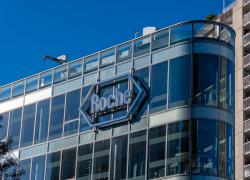
Sanofi goes deeper into the lead
The French group takes a shot at Perspective with its second bet on Orano Med.
The French group takes a shot at Perspective with its second bet on Orano Med.

Sanofi’s nascent ambitions to become a radiopharmaceuticals player have focused on using lead-212 as a source of alpha radiation, and today the group went further into this approach, paying Orano Med for a small stake in a joint venture focusing on alpha-emitting radioligands based on this isotope.
That’s notably different from other companies’ bets on alpha emission, most of which concern the isotope actinium-225; this includes RayzeBio, bought by Bristol Myers Squibb, and Fusion (AstraZeneca). So far there’s some backing for Sanofi’s enthusiasm, but both Orano’s lead project and the other main lead-212 player, Perspective Therapeutics, have raised questions clinically.
Despite that, this is the second time in six weeks that Sanofi has endorsed Orano. Last month saw a three-way deal between Sanofi, Paris-based Orano and the US group RadioMedix, concerning the anti-SSTR project Alphamedix (212Pb-dotamtate), which is in a phase 2 trial for SSTR-expressing neuroendocrine tumours (NETs).
Under that deal Sanofi paid RadioMedix and Orano €100m up front for rights to Alphamedix. Now Sanofi has paid Orano €300m for a 16% equity stake (the remainder being owned by Orano) in a new entity that will discover, design and develop “next-generation” radioligand therapies based on lead-212.
Aphamedix
Alphamedix’s phase 2 Alphamedix-02 trial comprises the most extensive lead-212 dataset released so far, in patients with NETs who had previously received somatostatin analogue therapy.
At this year’s ASCO there was a 56% ORR among 36 radioligand-naive patients. With the caveat that this number was based on investigator assessment, Alphamedix looked much better on a cross-trial basis than Novartis’s approved Lutathera, which produced a 13% ORR in its second-line Netter-1 trial. Lutathera also targets SSTR, but uses lutetium-177, a beta-emitting payload.
However, Alphamedix's toxicity was notable: 58% of patients had grade 3 or 4 adverse events, and 31% experienced serious adverse events. Three deaths were listed, two from progressive disease and one from sepsis – with the investigator putting the latter down to tumour burden. A fourth death, from carcinoid syndrome, was mentioned in the abstract but missing from the ASCO presentation.
Meanwhile, Perspective is claiming a 77% ORR with its SSTR2-targeting project 212Pb-VMT-α-NET, although these data come from an Indian study in just 13 patients, and a closer look showed a confirmed ORR of 62%.
This study has seen five fatal adverse events, with underlying disease blamed for four, and one due to cardiac arrest. The company is enrolling its own phase 1/2 trial.
Perspective has another lead-212 asset, the MCR1-targeting 212-Pb-VMT01, which it’s testing in melanoma. However, a recent phase 1/2 update failed to show a dose response with monotherapy, and Perspective was advised to lower the dose after the project showed accumulation in the kidneys. Perspective is now enrolling patients into an Opdivo combo arm.
Alpha or beta?
While Sanofi and Orano say their latest deal focuses on alpha-emitting isotopes, lead-212 isn’t directly an alpha emitter.
Rather, that isotope emits a beta particle to become bismuth-212, some of which then decays with the emission of an alpha particle. The relevance is that bismuth-212 has a one-hour half-life, making its use as an alpha emitter impractical; lead-212, on the other hand, boasts a half-life of over 10 hours, so is more convenient for this purpose.
Actinium-225, meanwhile, is a straight alpha emitter with a half-life of 10 days. That was worth $4.1bn to Bristol and $2bn to Astra in their respective RayzeBio and Fusion takeovers, and the key problems so far have concerned shortages of this isotope.
Until Sanofi linked up with Orano the biggest bet on lead-212 appeared to have been the $61m Lantheus paid for a 19.9% equity stake plus option over Perspective’s 212-Pb-VMT01.
Clinical-stage radiopharmaceuticals employing lead-212
| Project | Company | Target | Key trial | Note |
|---|---|---|---|---|
| Alphamedix (212Pb-dotamtate) | Sanofi (via Orano/ RadioMedix) | SSTR | Ph2 AlphaMedix-02 in NETs | Data at ASCO 2024: ORR 56% (20/36) in radioligand-therapy naive pts; 58% gr3/4 AEs, 4 fatal AEs (2 progressive disease) |
| 212Pb-VMT-α-NET | Perspective Therapeutics | SSTR2 | Ph1/2 in NETs | Data from Indian investigator-sponsored trial at SNMMI Jun 2024: confirmed ORR 62% (8/13), 5 fatal AEs (4 progressive disease) |
| 212-Pb-VMT01 | Perspective Therapeutics | MC1R | Ph1/2 in melanoma, +/- Opdivo | Data at SMR Oct 2024: unconfirmed ORR 33% (1/3) in cohort 1 (3.0mCi), 0% in cohort 2 (5.0mCi); SMC recommended using lower dose (1.5mCi) |
| 212Pb-ADVC001 | AdvanCell | PSMA | Ph1/2 TheraPb in mCRPC | Completes Dec 2027 |
| 212Pb-dotam-GRPR1 | Orano | GRPR | Ph1 in GRPR-expressing tumours | Primary completion Aug 2024 |
| 212Pb-NG001 (AB001) | Artbio/ AlphaGen | PSMA | Early ph1 | Completed Jul 2023; collaboration between AlphaGen & ARTBIO announced Feb 2024 in greater China |
Note: CRPC=castration-resistant prostate cancer; NET=neuroendocrine tumour; SMC=safety monitoring committee. Source: OncologyPipeline.
2347













